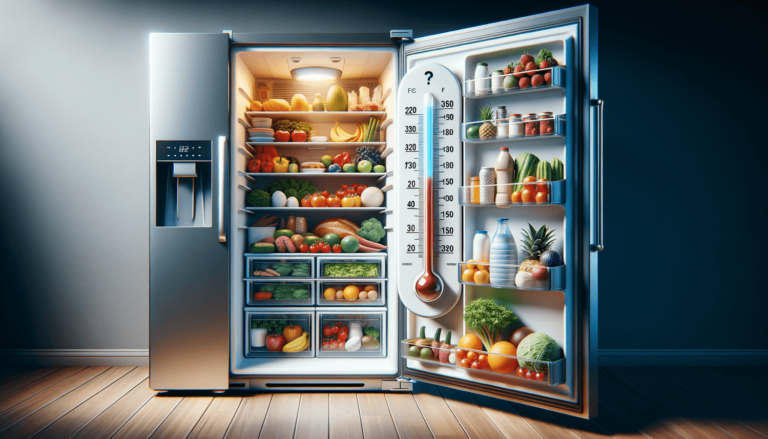

The ideal temperature range for a refrigerator to keep food safe and fresh is between 35°F (1.7°C) and 38°F (3.3°C). Setting your refrigerator within this range ensures that it operates efficiently, minimizes the risk of foodborne illnesses, and helps to preserve the quality and lifespan of your food. At Setting King, we’re providing our trusted advice to guide you in maintaining the optimal temperature for your refrigerator.
Quick summary
Ensuring your refrigerator is set to the right temperature is crucial for food safety and energy efficiency. Foods like meats, dairy, and many produce items require specific temperatures to prevent the growth of harmful bacteria. The range between 35°F and 38°F is recommended because it is cold enough to slow bacterial growth while preventing the food from freezing.
Checking and adjusting the temperature of your refrigerator is straightforward. Most modern refrigerators come with built-in thermostats or digital displays that allow for easy temperature monitoring and adjustment. If your refrigerator does not have these features, you can use an appliance thermometer to monitor the temperature. Place the thermometer in a glass of water in the center of the refrigerator and check after 24 hours. To adjust the temperature, locate the thermostat control, which is usually found inside the refrigerator and adjust it to the desired setting.
There are several practices you can adopt to help maintain a consistent temperature in your refrigerator:
Setting your refrigerator to the right temperature isn’t just about keeping food fresh. It’s a crucial step in preventing foodborne illnesses. Perishable foods, if stored above 40°F (4.4°C), can become a breeding ground for bacteria like Salmonella, E. coli, and Listeria. These pathogens can multiply rapidly, leading to food spoilage and potential health risks. Thus, maintaining the ideal temperature is key to safeguarding your family’s health and reducing waste.
At Setting King, we understand the importance of keeping your refrigerator at the correct temperature. Not only does it keep your food safe, but it also enhances its lifespan, allowing you to enjoy fresher meals for longer. We hope this guide has shed light on why maintaining the right refrigerator temperature is crucial and how you can achieve it. Remember, a well-adjusted refrigerator is a step towards a healthier lifestyle, and following the guidelines provided will ensure you get the most out of your appliance.